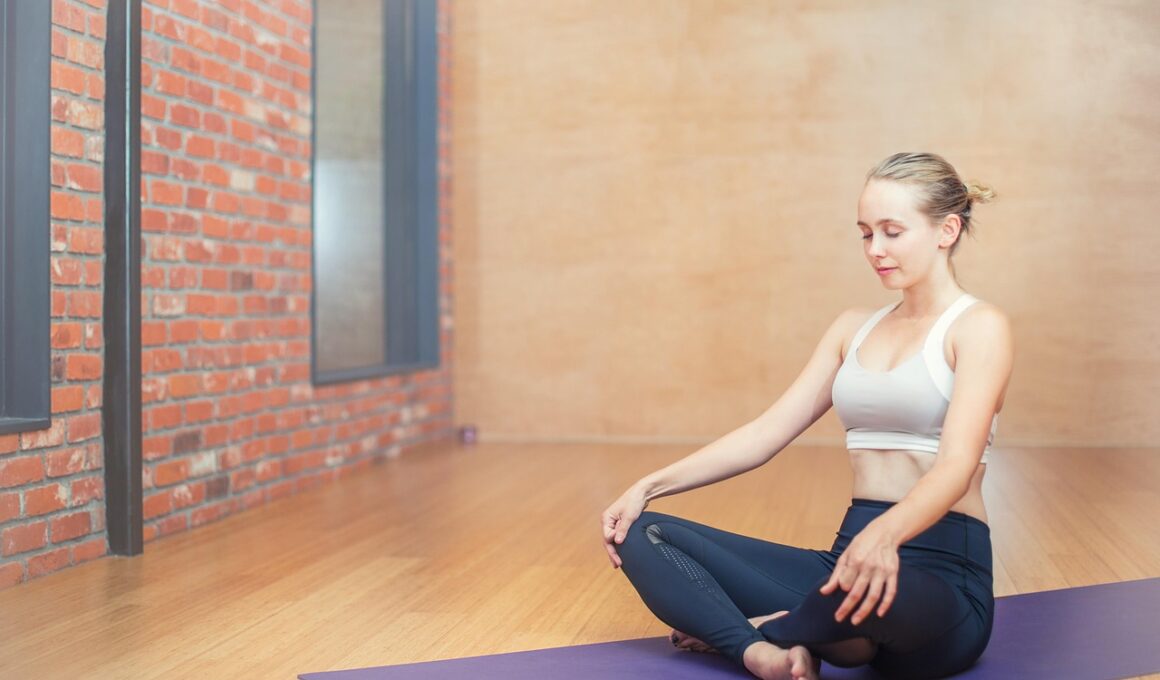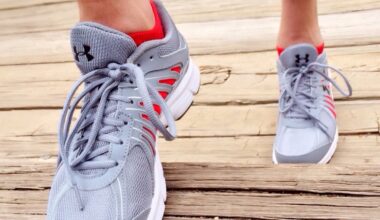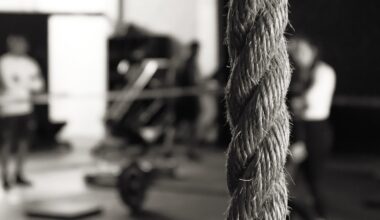Dance Fitness and Mindfulness: Moving Towards Mental Clarity
Dance fitness has emerged as a powerful tool for enhancing mental health and clarity. By engaging in dance-based activities, individuals can not only improve their physical fitness but also cultivate mindfulness and awareness. This twofold approach contributes greatly to reducing stress and anxiety. Dance encourages self-expression and creativity, allowing participants to verbalize their emotions through movement. It connects the body and mind, fostering a stronger sense of identity and presence. Research suggests that engaging in rhythmic movements can activate brain regions connected with emotional regulation and cognitive processing. Dance workouts can also enhance mood through the release of endorphins, contributing to an overall sense of happiness. The combination of music and movement helps create a unique environment for personal reflection and mindfulness practice. Additionally, many dance classes offer community, creating a supportive network that is beneficial for mental health. Incorporating mindfulness techniques during dance routines encourages participants to focus fully on their bodies and experiences for a deeper connection with themselves. This holistic approach to fitness stands out as an innovative way to support mental well-being.
The Connection Between Dance and Mental Health
Pursuing dance fitness helps individuals experience greater mental clarity by harmonizing their body and mind, knowing how vital that connection is. Dance workouts not only provide physical benefits but also play an integral role in promoting positive mental health outcomes. For many, a consistent dance practice acts as a form of therapy, particularly for those grappling with stress or anxiety. Each beat of the music can lead participants deeper into self-discovery and personal growth, creating transformative experiences. As people engage in rhythmic movements and learn new choreography, they achieve a clearer mental state by releasing pent-up emotions. Furthermore, practicing dance forms specific meditation methods nurtures mindfulness, which is rooted in being present and aware. Incorporating deep breathing techniques into dance practice can further lower stress levels, offering additional support for overall health. Being surrounded by like-minded individuals fosters connection, allowing participants to share feelings and thoughts in a non-judgmental space. Strengthening social bonds in this atmosphere not only uplifts spirits but maintains the motivation to continue pursuing personal fitness journeys separately and collectively.
In addition to the emotional benefits, dance fitness also provides cognitive enhancements that bolster mental clarity. Engaging in dance tasks multiple times effectively stimulates mental processes. Participants learn new movements and patterns, activating areas of the brain responsible for learning and memory. For example, learning choreography requires concentration and the ability to focus, which helps maintain mental sharpness. Furthermore, regular engagement in dance routines has been linked to improved memory and problem-solving abilities among individuals of all ages. The varying complexities and rhythms of dance genres foster adaptability and resilience as learners navigate through various styles. Moreover, the sensory experience of dance engages various senses—sight, hearing, and touch—further promoting cognitive engagement and mental agility. The dynamic nature of dance requires individuals to remain in tune with their bodies, enhancing spatial awareness. Such heightened awareness transfers seamlessly into other life aspects, allowing individuals to navigate personal challenges more effectively. Thus, dance fitness not only serves as a productive outlet for emotional expression but also nurtures essential cognitive skills crucial for a fulfilling life.
Mindfulness Techniques Within Dance
Integrating mindfulness techniques into dance fitness can lead to profound transformations in mental health and overall well-being. Practicing mindfulness during dance involves focusing fully on the experience of movement, the rhythm of music, and the sensations in the body. A growing number of dance instructors have recognized the significance of this practice, incorporating mindfulness exercises into their routines. This can help participants become more aware of their thoughts, feelings, and bodily sensations during workouts, thus fostering a deeper connection between mind and body. Examples of mindfulness techniques include conscious breathing, visualization, and body scanning, enhancing the emotional and physical aspects of dancing experiences. For instance, individuals may visualize their movements as fluid expressions of emotion, tapping into their feelings meaningfully. Additionally, taking moments to pause during dance to notice how the body feels fosters greater self-awareness. This mindfulness practice not only enriches the dancing experience but also encourages participants to carry that sense of awareness into other elements of their lives. Consequently, this heightened sense of presence not only promotes mental clarity but also advances emotional resilience and overall happiness.
A variety of dance styles can support mindfulness and mental health, inviting people of all backgrounds to participate. Common forms such as Zumba, hip-hop, salsa, and ballet blend aerobic exercise with creative movement, offering enjoyable fitness options. Each style presents unique benefits, allowing individuals to explore and discover what resonates with their preferences. For example, Zumba combines global rhythms with dance movements, providing a fun way to uplift moods while working out. On the other hand, ballet emphasizes precision and control, enhancing focus and discipline. Participants can intentionally choose styles that align with their goals, whether it’s relaxation through gentle movements or high-energy workouts to boost endorphins. Joining group classes fosters community belonging, enabling participants to uplift and support each other. Discovering new styles can also introduce fresh challenges, stimulating motivation and engagement in overall fitness journeys. Additionally, as dance trends evolve, opportunities arise for exploration and growth. Supporting mental health through dance fitness hinges on this diversity and inclusivity, allowing everyone to find joy and connection.
Benefits of Group Dance Fitness
Experiencing dance fitness in a group setting enhances both positive social interactions and mental clarity. Participating in group dance classes contributes to a supportive community where friendships may blossom and collaboration flourishes. The shared experience of movement often results in laughter, joy, and an elevated sense of self-worth, creating an environment conducive to mental wellness. In essence, the social connections built during these sessions can serve as a protective factor against depression and anxiety, promoting resilience among participants. This collective atmosphere encourages accountability as individuals motivate each other to achieve their health goals. Authentic connections formed in groups provide emotional support systems, essential during times of stress or uncertainty. Moreover, participants tend to stay committed to their fitness routine when engaging in group workouts. Encouragement and positive reinforcement among peers further amplify motivation, leading to increased benefits and enjoyment. Being surrounded by individuals pursuing similar fitness goals fosters a sense of belonging, further enhancing emotional well-being. Overall, these aspects of community play a crucial role in shaping positive experiences and outcomes in the world of dance fitness.
In conclusion, integrating dance fitness and mindfulness creates a powerful synergy that fuels personal growth and mental clarity. Both mental and physical health benefit immensely from participation, boosting emotional resilience and cognitive performance. Mindfulness techniques incorporated within dance workout routines allow individuals to develop self-awareness and connect with themselves on deeper levels. Whether through the creativity of movement or the joy of community, dance fitness offers diverse advantages to empower individuals in their mental wellness journeys. Therefore, it is vital for people seeking holistic approaches to health to consider incorporating dance into their routines. Every dance class serves as an opportunity for self-expression, connection, and personal discovery. This innovative approach to fitness merges exercise with emotional well-being, illuminating paths to mental clarity. As more individuals embrace dance fitness, the widespread benefits for mental health will likely shine even brighter. Ultimately, engaging in dance fitness nurtures a love for movement, community engagement, and mindfulness, making it a valuable practice for all striving for mental clarity and emotional wellness.
Finding Your Dance Fitness Community
It’s essential to explore various dance fitness classes and communities to find the right fit for you. Engaging in different styles and environments can help you identify what resonates most with your taste and preferences. Flexibility and openness toward new experiences lead to greater discoveries within the realm of dance. Local studios and community centers often offer trial classes for first-time participants, providing an excellent opportunity to gauge compatibility. Furthermore, many online platforms have emerged, offering virtual dance fitness classes, making it more accessible for diverse participants. Discovering the right instructors is crucial, as they play an important role in the learning environment. A good instructor will create a welcoming atmosphere, encouraging each individual to explore their potential and develop their skills. As you embark on this journey, remember to celebrate small achievements and focus on progress rather than perfection. The dance fitness community thrives on connection and encouragement, so don’t hesitate to share your experiences with others. Whether in-person or online, embracing these opportunities amplifies the joy of movement while helping improve mental health and overall well-being.


